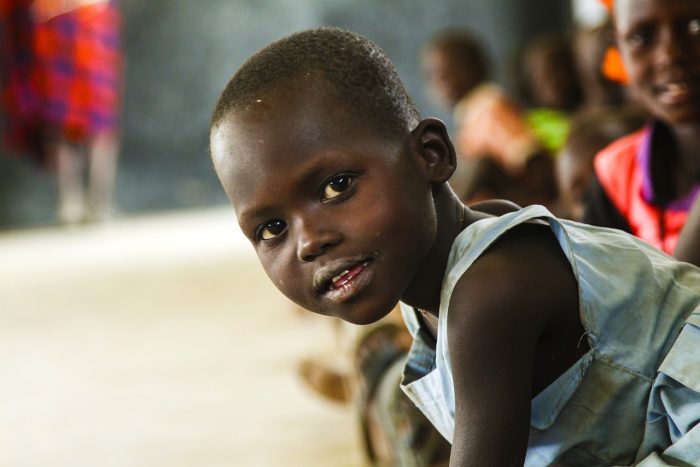Education intervention programs are not exclusive to underdeveloped countries like Nigeria. One of the largest education intervention programs is Teach for America which has had over 60,000 volunteers since its inception. Due to several reasons, shortfalls occur in different learning phases and must be addressed because they often directly affect the quality of life available to the affected person. Having worked in a number of initiatives that directly or indirectly intervene in the education sector. I wish to categorize these areas of intervention into these classes.
(This seems like an obvious classification. But I think documenting the obvious is important, so it becomes a conscious part of our design process. In addition, you can easily understand how to plot your growth along with the classes or across them.)
Class 1: Out of School and Uneducated
Nigeria’s 13 million children are the largest in the world when counting the number of children who do not attend school, have yet to attend a school or have had to drop out early. This is a staggering number equivalent to the population of some countries like Belgium, Portugal, and Rwanda. Helping these children get educated is both important and urgent. The case of out of school children’s cut beyond just financial capability. While money is usually one of the hindrances, certain parents are comfortable leaving their children out of school for cultural reasons. Other reasons that could hinder a child’s access to education include gender, location, conflict, disability and socioeconomic status – factors that exist before the child is born.
I will also highlight girls who have to stay out of school temporarily but consistently each month because of their menstrual period. This continuous disruption of a child’s education due to the absence of WASH facilities (and cost of menstrual pads) remains one of the key areas of intervention, especially in low-income schools. This adds to other reasons why girls miss school such as child marriage, early pregnancy, child labour, housework, etc.
Some Important data about out of school children are these;
- 63 million children of primary school age (typically aged 6-11 years) are not in school
- 61 million adolescents of lower secondary school (typically aged 12-14) are not in school
- Adolescents of upper secondary school age, from 15-17 years, make up the largest group of those out of school. About 139 million (53 percent of the total) are not in school
- More than one-half of all out-of-school children are in sub-Saharan Africa
- 50 percent of children who are out of school are girls
- Nearly 1 in 4 of out-of-school children live in crises-affected countries
Intervention in these areas includes providing WASH facilities, evening classes, creating new schools accessible to children in remote areas or areas of conflict, creating structures that allow disabled children to attend schools, inclusion programs, etc.
Class 2: In Pre-Varsity School but Under-Educated
This category comprises several public schools in Nigeria and surprisingly a large number of private schools in middle and low-income communities. While it has become the bane of Nigerian public education system to be under-resourced, you will also find that several private schools are also unable to provide quality education. What is common is that these schools often charge lower than the high-profile ones but appear an upgrade on the public schools. Students who attend these schools are less exposed to important skills that are introduced to students in the early stages of their lives. An example of this is computer literacy.
Interventions for public schools and low-income private schools will often include those that provide access to key educational resources, information, and services at a reduced cost, or with a financial model that either allows students to pay over a long period or is funded externally of the students’ pockets.
Pre-varsity education intervention is one of the most important in this list. This is because when early child development and education is done properly, they form a strong foundation for the latter years of the child. Students who started out poorly will often struggle to catch up with their peers who had a great foundation. Asides being great at literacy skills, students may need to be introduced to other soft skills such as communication, leadership, problem-solving, sports, team-work and so on. Learning about digital technology is becoming more than necessary as the world continues to evolve.
Class 3: In Tertiary School but Under-Skilled
Well, 9 out of 10 universities in Nigeria (from observation rather than data) do not possess the right facilities to train world-class students. Students who are lucky enough to know this early and are sharp enough to make moves, often have to rely on other means, usually online, to attain what is regarded as the world standard. Thus, intervention for the millions of students who are in Nigeria’s undergraduate and postgraduate schools is necessary.
Providing alternative learning opportunities that undergraduates can rely on is a way of intervening in the malaise. Starting from helping undergraduates learn the use of simple work tools to introducing programs that actually improve the quality of education received in their fields. This may also include increasing access to such learning programs and opportunities and providing them at attainable costs.
A direct intervention would be influencing the creation of better government policies and improvement in funding provided for academic institutions.
Class 4: In job – but Under-Skilled
Due to a continuously changing world of work, in addition to the poor training most people receive in Nigerian tertiary institutions, you will find that lots of workers do not possess the required skills to do their job at maximum efficiency and productivity. Nigeria’s labour productivity is at 3.61 dollars/hr which is quite low especially when compared with other countries such as South Africa (19 dollars/hr), Turkey (31 dollars/hr), and the United States (67 dollars/hr).
This means the country is leaving a lot of money on the table that could have been used to improve the lives of citizens. We are not maximizing our labour capacity. Improving labour productivity, asides from providing key facilities that make work easier and faster requires the further education of workers to excel in their current fields. This education is often also required because many people will work in jobs they did not study at the university. Better trained officers will raise the income per spend of a company significantly.
Class 5: Out of Job and Out of Skills
This category of people may also be products of poor tertiary education or no tertiary education at all. These set of people lack the required skills to take on most jobs that pay well enough or the jobs that they would ideally want. Unemployed, these set of people are incapacitated from gaining steady sources of income. This may also include women who are unable to return to school, do not have the required capital and knowledge to sustain a business or are heavy dependances on unearned income.
Some of the intervention programs for these set of people are entrepreneurial training, vocational training programs, street education programs, etc. These programs are key as they support an otherwise excluded population who may easily resort to crime or other forms of work they would normally not want to do.
Class 6: Adult Illiteracy
Unless dead, adults whether or not they are out of direct service will continue to interact and transact with other people, both young and old. Different institutions will often require both the old and the young to have standard literacy skills to enjoy their services. Thus, adults who can neither read nor write and do not have trusted people to do this on their behalf will be excluded from key services and opportunities that may be necessary for them to live well.
The Organization for World Economic Cooperation (OECD) defines adult education as:
Adult education encompasses activities and programs organized for this purpose to meet the learning needs and interests of those who have been out of compulsory schooling and whose main occupation is no longer to go to school at any stage of their lives.
Adult Education remains a key area of educational intervention. These interventions include what may be referred to as ‘continuing education’, ‘recurrent education’ or ‘second chance education’.
Why is Adult Education important? Answers include the rapidly changing technology which continuously demands better literacy level to maximize. Others are
- The Extension of Human Longevity- When adults are properly educated, they make healthy life choices.
- Increase in the Time of Formal Training Participation
- Changes in Work / Professional Life
- Changing Status of Women- Women, who may have been marginalized at the early stages of their lives get a chance at redemption.
- Changes in the concept of leisure time
- Education Life-long Need
- Democracy, Increase in Human Rights Demands
Class 7: Teacher Training
This is quite essential to power most of the learning needs of members of all the different categories listed above. Teachers need to be well equipped to help students; you cannot give what you do not have. In addition, since varying categories have varying learning demands, their teachers must be able to handle their training, whatever they are. Thus, teacher training interventions are just as important when addressing education gaps in a country. In Nigeria, The Teachers Registration Council of Nigeria has pointed out that a total of 250,000 teachers must be employed annually in the country to address the shortfall of teachers in basic and secondary school levels.
Teacher training interventions may include upskilling teachers and exposing them to modern teaching techniques in their fields, creating programs that increase the availability of teachers and addresses the shortfall, creating interventions that solved teacher needs such as poor remuneration. These are some of the areas that need urgent interventions.
The United Nations already reported that new projections show the world is off-track in meeting its education commitments by 2030. This should propel more people to take education intervention seriously and proffer, as well as continue to vigorously implement, new solutions that can improve access to quality education in Nigeria and across the world.
Are you working in education? Which of these areas are you working on?
Habeeb X
#Around the world, August 12 is celebrated as the International Youth Day. This year’s theme, “Transforming Education”, highlights efforts to make education more relevant, equitable and inclusive for all youth, including efforts by youth themselves.

